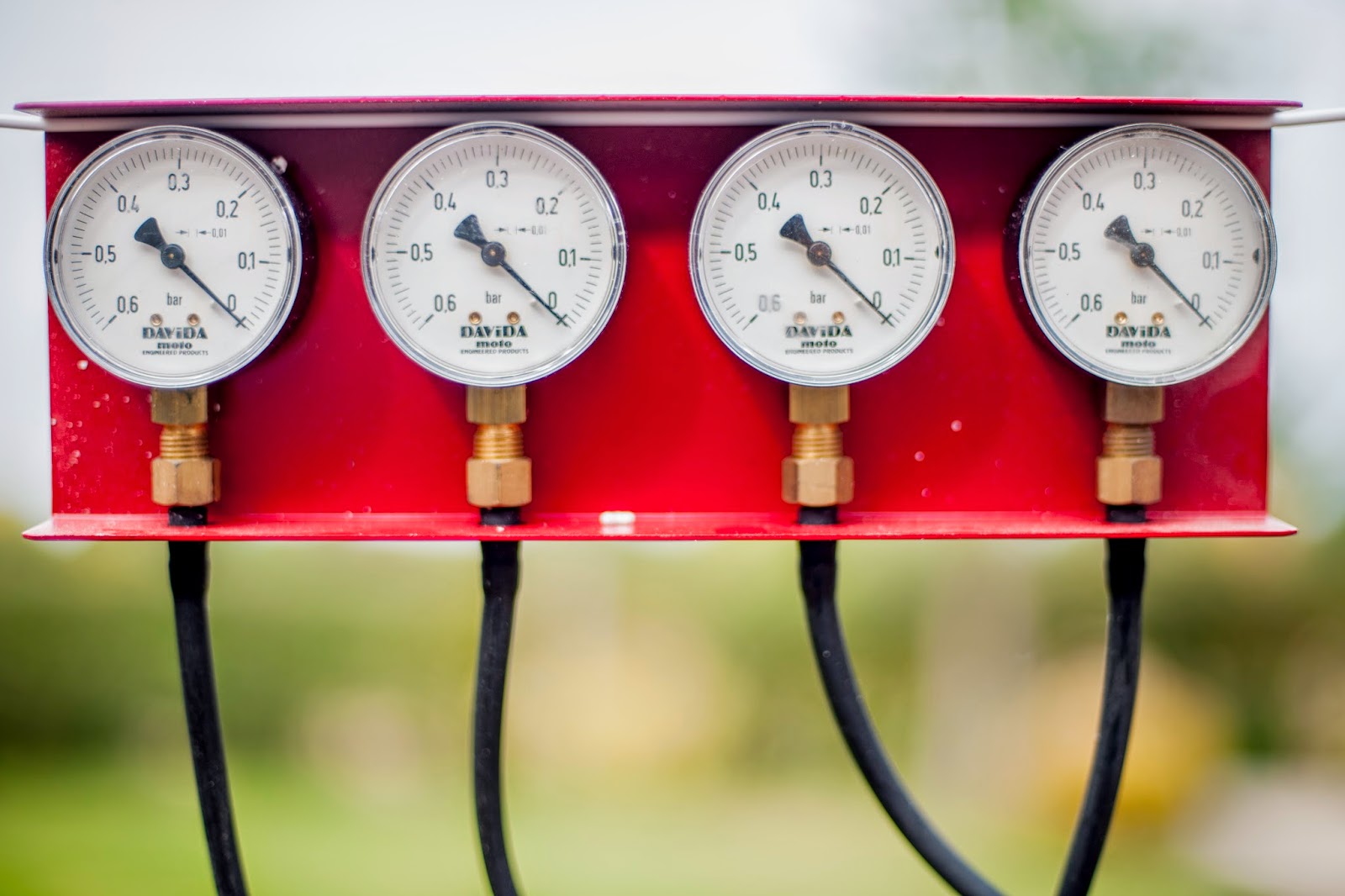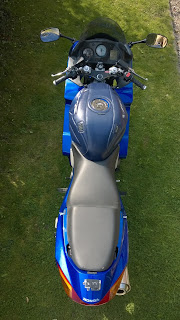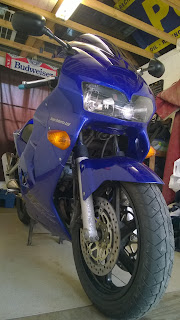On balance
One of the first tasks I normally perform on a new (to me) bike is to balance the carburettors.
This is one of those jobs that never seems to get done as you need specialist tools but can make quite a difference in the day to day running of the bike.
"But wait Gavin, that's an injected motorcycle" I hear you cry. Well this is true but you can still balance the throttle bodies and mine are all over the place.
When I first purchased this bike, the tick over was up at 3.5k rpm when warm. I bottomed out the idle screw and had to also wind back the whole throttle body plate in order to get it near to the 1.5rpm correct idle.
Now this might have had something to do with the bike massively over compensating for having a mouse house in the airbox but with that small obstruction removed I knew the throttle body balance would be out after my fiddling.
The first thing obstructing me from doing this right in the first place was that I had lent my carb gauges to a mate... 8 years ago! In fairness he had offered to replace them but he was in the middle of a house move so I decided to buy myself a set before my bike had a nervous break down form iffy throttle body settings.
I decided not to buy another set of those plastic gauges on a blue pressed steel plate (the ones sold by pretty much everybody) as they were only ever adequate. Instead I opted to spend a few extra pennies on a set of Davida gauges as you can see above. Brass fittings and auto needle flutter control makes these much nicer to use and as I am the stingy guy you have come to expect, I managed to win a set for £60 so they were the same price as the cheap ones anyway.
 To do this job the seat needs to be removed then the tank displaced. Now attached to the sides of the airbox are four thin hoses and they go down to the throttle bodies for your vacuum pressure. Pretty handy and to make it even better, Honda had bothered to number them to make your life even easier. Thank you Honda! You will need some hose to hose adapters to do this (supplied with the Davida gauge kit) then just plug them in to their corresponding gauge hose.
To do this job the seat needs to be removed then the tank displaced. Now attached to the sides of the airbox are four thin hoses and they go down to the throttle bodies for your vacuum pressure. Pretty handy and to make it even better, Honda had bothered to number them to make your life even easier. Thank you Honda! You will need some hose to hose adapters to do this (supplied with the Davida gauge kit) then just plug them in to their corresponding gauge hose.
All connected I fired the bike up and allowed it to warm up. With the fuel tank only displaced I still had a fuel supply. If you had to remove the tank completely you would need to warm the bike up first then make a tank out of an old container of some sorts (milk bottle, funnel etc) and a piece of hose hung from the ceiling.
 With the bike warm I was able to start balancing. At the bottom of the image you see on the left are three screws on a plate. This is what you will be looking at on the right hand side of the bike. These are the screws that I was going to balance the throttle bodies with. The left screw will balance the left/rear pair (3,4) and the right screw will balance the righ/forward pair (1,2). Turn the right one till 1 and 2 needles line up. If you are doing this job then you will need to use a spanner on these as they are to close to the frame to use a screwdriver and they don't have a hole like the idle screw does. Also be sure to maintain the idle speed high enough as you can adjust this so far that it cuts the engine out or starts revving like mad.
With the bike warm I was able to start balancing. At the bottom of the image you see on the left are three screws on a plate. This is what you will be looking at on the right hand side of the bike. These are the screws that I was going to balance the throttle bodies with. The left screw will balance the left/rear pair (3,4) and the right screw will balance the righ/forward pair (1,2). Turn the right one till 1 and 2 needles line up. If you are doing this job then you will need to use a spanner on these as they are to close to the frame to use a screwdriver and they don't have a hole like the idle screw does. Also be sure to maintain the idle speed high enough as you can adjust this so far that it cuts the engine out or starts revving like mad.
With 1 and 2 balanced I did the same for 3 and 4. when they are both matching pairs I could turn the centre screw to bring the two pairs together. When all aligned you can fiddle and adjust till the needles all align and set your idle speed again.
Finally I checked that the idle adjustment (top right of the plate can be accessed by removing a bung from the frame) and the auto choke (the long rod on top) are set correctly.
All finished I shut the engine down and plugged all of the hoses back into their blanks on the airbox (never leave these off or you will loose pressure in the inlet) and plopped the tank back down. Pretty easy.
In review; the new gauges were far better than the cheap ones I had been using in the past, the job was made easier by a well designed vacuum hose location and only made fiddly by the throttle body adjustment screw location.
The bike ticks over more smoothly now and feels more snappy on the throttle from idle. Not bad for a half hour job.
The bike ticks over more smoothly now and feels more snappy on the throttle from idle. Not bad for a half hour job.

.jpg)


Comments
Post a Comment